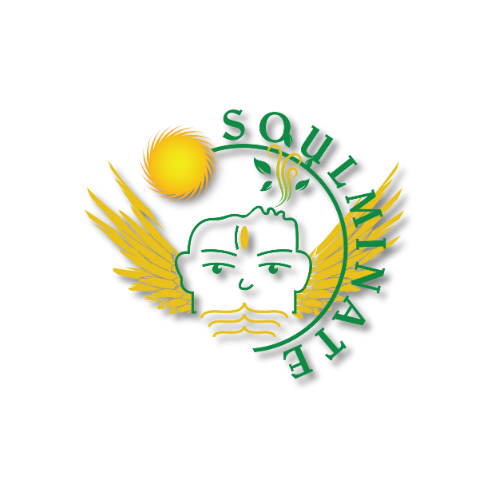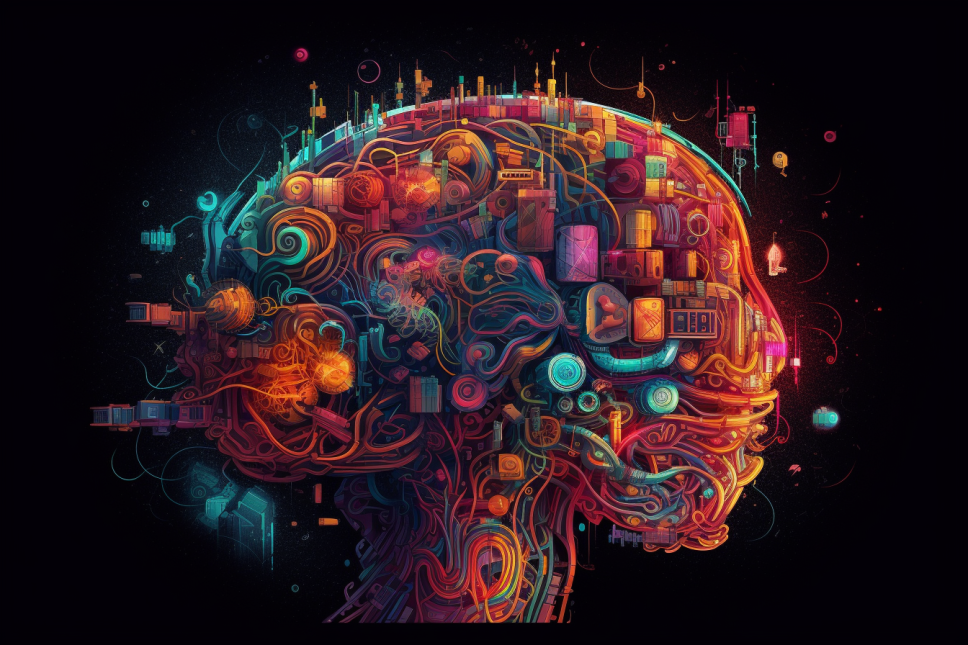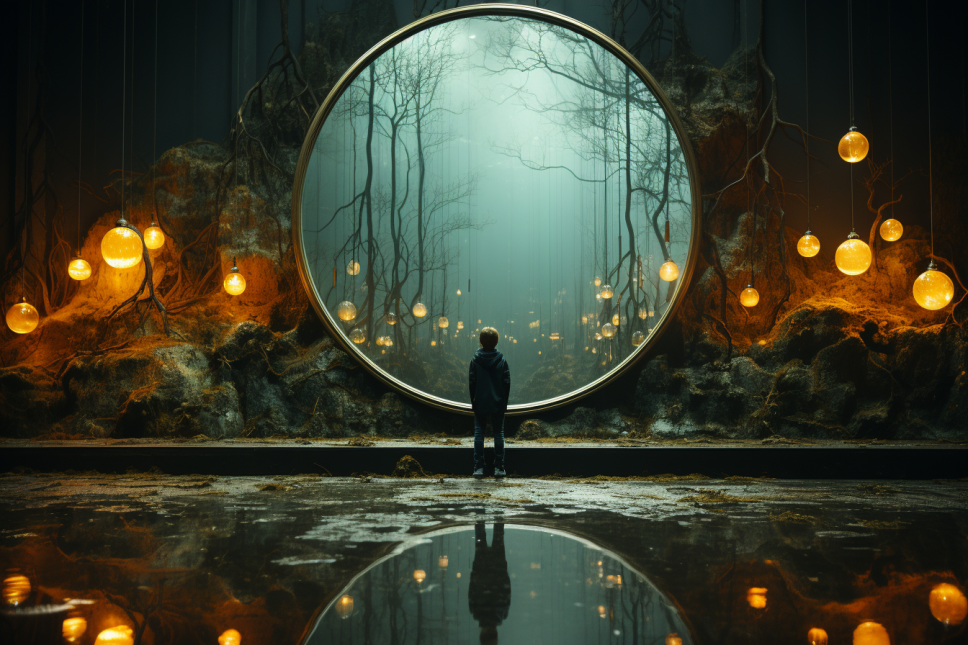Creative Mastery is a radical new approach to imagining the future and turning every moment of your life into a work of art. This self-paced Masterclass is designed to help you break boundaries and think freely, providing you with the tools and techniques you need to unleash your creativity and achieve your goals.
Through this Masterclass, we will explore how to set healthy boundaries, build positive relationships, and develop a creative approach to mastering new skills. We will also dive into the power of visualization and how to use it to manifest your dreams into reality. With Creative Mastery, you will learn how to tap into your inner creativity and use it to transform your life in ways you never thought possible.
Whether you are an artist, entrepreneur, or simply looking to break free from the limitations that are holding you back, Creative Mastery is your ultimate manual to unlocking your full potential. Join us on this journey of self-discovery and transformation, and discover the power of creative thinking to help you achieve your dreams.
Understanding Creative Mastery
Definition and Explanation of Creative Mastery
Creative Mastery is the ultimate level of proficiency in the creative process. It is the ability to break boundaries, think freely, and create without fear of judgment or limiting shackles. Creative Mastery is achieved when we activate our creativity and expand our imagination daily, expressing who we are and imagining the future we want.
At its core, Creative Mastery is about accessing the source of creativity within us. It is about developing a structured imagination that allows us to create without expecting specific results. This radical new approach to creativity frees us from the constraints of our own expectations and allows us to achieve miracles.
Role of Free Thinking and Open-Mindedness
Free thinking and open-mindedness are crucial components of Creative Mastery. They allow us to see beyond our own limitations and explore new possibilities. When we are free to think and open to new ideas, we can activate our creativity and unleash our full creative potential.
To achieve Creative Mastery, we must be willing to experiment and take risks. We must be willing to challenge our own beliefs and push beyond our own boundaries. This requires a deep emotional relationship with our work and a willingness to receive feedback and make adjustments as necessary.
At the same time, we must maintain healthy boundaries and not allow ourselves to be manipulated or shamed into conforming to others’ expectations. We must be free from the fear of judgment and be willing to express who we are in our work.
In summary, Creative Mastery is about accessing the source of creativity within us, expanding our imagination, and expressing who we are without fear of judgment or limiting shackles. It requires free thinking, open-mindedness, experimentation, and a deep emotional relationship with our work.
The Science Behind Creativity
Creativity is often thought of as a mysterious and elusive concept, but there is actually a lot of science behind it. In this section, we will discuss some of the key findings from research on the science of creativity.
Brief Discussion on How the Brain Processes Creative Thought
One of the most fascinating areas of research on creativity is the study of how the brain processes creative thought. Studies have shown that creative thinking involves a complex interplay of different brain regions and neural networks.
One theory suggests that creativity happens when different networks in the brain responsible for problem-solving work together. This idea is supported by a group of psychology experts from Harvard, Yale, and other institutions who used MRIs to predict an individual’s creativity level.
Another theory suggests that creativity is linked to a state of “flow,” where the brain is fully engaged and focused on a particular task. This state is associated with increased activity in the prefrontal cortex, which is involved in decision-making and attention.
Role of the Right and Left Brain Hemispheres in Creative Mastery
Another popular idea about creativity is that it is a function of the right hemisphere of the brain. While there is some truth to this idea, it is actually an oversimplification of the complex interplay between the two hemispheres.
Studies have shown that creative thinking involves both hemispheres of the brain, with the right hemisphere playing a more prominent role in some aspects of creativity, such as divergent thinking and generating new ideas. However, the left hemisphere is also involved in creative thinking, particularly in tasks that require logical reasoning and problem-solving.
Overall, the science of creativity is a fascinating and rapidly evolving field. By understanding the underlying mechanisms of creative thought, we can better understand how to cultivate our own creativity and break through the boundaries that hold us back.
The Power of Creative Thinking
Creative thinking is the ability to generate new and innovative ideas, and to approach problems and situations from a fresh perspective. It is a valuable skill that can help us in both our personal and professional lives. In this section, we will explore the benefits of creative thinking in our personal lives, as well as its role in professional success and innovation.
Benefits of Creative Thinking in Personal Life
Creative thinking can have a positive impact on our personal lives in many ways. Here are some of the benefits:
- Improved problem-solving skills: Creative thinking allows us to come up with unique solutions to problems, which can help us overcome challenges more effectively.
- Enhanced self-expression: When we think creatively, we are better able to express ourselves and communicate our ideas to others.
- Increased self-confidence: Creative thinking can help us feel more confident in our abilities and more willing to take risks.
- Greater sense of fulfillment: When we use our creativity to pursue our passions and interests, we can experience a greater sense of fulfillment and purpose in life.
Role of Creativity in Professional Success
Creative thinking is also crucial for professional success. Here are some ways in which creativity can benefit us in the workplace:
- Increased innovation: Creative thinking allows us to come up with new and innovative ideas, which can help us stay ahead of the competition and drive business growth.
- Improved problem-solving skills: In the workplace, creative thinking can help us identify and solve problems more effectively, leading to better outcomes for the organization.
- Enhanced collaboration: When we approach problems and projects with a creative mindset, we are more likely to collaborate effectively with others and generate new ideas together.
- Greater job satisfaction: Using our creativity in our work can help us feel more engaged and fulfilled in our jobs, leading to greater job satisfaction.
Role of Creativity in Innovation
Finally, creativity plays a crucial role in driving innovation. Here are some ways in which creative thinking can fuel innovation:
- Encouraging experimentation: Creative thinking allows us to explore new ideas and approaches, which can lead to breakthrough innovations.
- Fostering a culture of innovation: When creativity is valued and encouraged in an organization, it can help create a culture of innovation where new ideas are welcomed and nurtured.
- Driving business growth: Innovative products and services can help organizations stay competitive and drive business growth.
- Solving complex problems: Creative thinking can help us approach complex problems in new and innovative ways, leading to more effective solutions.
In conclusion, creative thinking is a valuable skill that can benefit us in many ways, both personally and professionally. By embracing our creativity and approaching problems and situations with a fresh perspective, we can unlock new opportunities and achieve greater success.
Unleashing Your Creative Potential: The Basics
Creativity is a valuable skill that can be applied to various aspects of our lives. It allows us to think outside the box, come up with innovative solutions, and break boundaries. In this section, we will explore the basics of unleashing your creative potential and how to develop your unique creative style.
Understanding Your Unique Creative Style
Every individual has their unique creative style. Understanding your creative style is the first step to unleashing your creative potential. It involves identifying your strengths, weaknesses, interests, and preferences. Some people are more visual, while others are more auditory or kinesthetic. Knowing your style will help you determine the best way to approach a creative task and enable you to produce your best work.
The Role of Curiosity and Openness in Fostering Creativity
Curiosity and openness are essential ingredients for fostering creativity. Being curious means being open to new ideas, experiences, and perspectives. It helps us discover new ways of doing things and challenges us to think differently. Openness, on the other hand, involves being receptive to feedback and criticism. It allows us to learn from our mistakes and improve our work continually.
Embracing Mistakes and Failures as Part of the Creative Process
Mistakes and failures are part of the creative process. They are not signs of weakness but opportunities to learn and grow. Embracing mistakes and failures means accepting that not everything we create will be perfect. It involves being open to feedback and criticism and using it to improve our work continually.
In conclusion, unleashing your creative potential is a gradual process that requires patience, persistence, and dedication. Understanding your unique creative style, being curious and open, and embracing mistakes and failures are key ingredients to developing your creativity. With time and practice, you can break boundaries, think freely, and produce your best work.
Creative Mastery Techniques
At the core of creative mastery lies a set of techniques that can help us unleash our full creative potential. In this section, we will explore some of these techniques and how they can help us break boundaries and think freely.
The Concept of “Thinking Outside the Box” and How to Do It
Thinking outside the box is a term that has been used to describe the ability to think creatively and unconventionally. It means breaking free from the constraints of traditional thinking and exploring new possibilities. To do this, we need to challenge our assumptions, question our beliefs, and approach problems from different angles.
One way to think outside the box is to use metaphors and analogies. By comparing a problem to something else, we can gain new insights and perspectives. Another technique is to reverse assumptions and constraints. Instead of accepting them as given, we can turn them around and see what happens.
Techniques for Brainstorming, Ideation, and Mind Mapping
Brainstorming is a classic technique for generating ideas. It involves gathering a group of people and coming up with as many ideas as possible in a short amount of time. The key is to suspend judgment and criticism and focus on quantity, not quality.
Ideation is a more structured approach to brainstorming. It involves defining a problem or opportunity and then generating a large number of ideas that could solve it. One way to do this is to use a technique called SCAMPER, which stands for Substitute, Combine, Adapt, Modify, Put to another use, Eliminate, and Reverse.
Mind mapping is a visual technique for organizing ideas and exploring relationships between them. It involves creating a diagram that shows the central idea in the middle and the related ideas branching out from it. This technique can be used to generate new ideas, organize existing ones, and communicate complex information.
Leveraging Collaborative Creativity and Diverse Perspectives
Collaboration is a powerful tool for creativity. By working with others, we can combine our strengths, share our knowledge, and generate new ideas. However, collaboration requires more than just putting people in a room together. It requires a culture of trust, respect, and openness.
Diversity is another key factor in creativity. By bringing together people with different backgrounds, experiences, and perspectives, we can generate a wider range of ideas and approaches. However, diversity also requires a culture of inclusion, where everyone feels valued and respected.
By mastering these techniques and leveraging the power of collaboration and diversity, we can break boundaries and think freely, unlocking our full creative potential.
Overcoming Challenges in Creative Mastery
Understanding and Overcoming Fear of Criticism and Creative Blocks
One of the biggest challenges in creative mastery is the fear of criticism and creative blocks. We often hold ourselves back from expressing our creative ideas because we fear being judged or rejected. This fear is natural, but it can be overcome with practice.
To overcome the fear of criticism, we need to learn to detach ourselves from the opinions of others. We must understand that criticism is not a reflection of our worth as individuals or the value of our ideas. We should also seek constructive feedback from trusted sources to improve our work.
Creative blocks can also be a major obstacle in our creative journey. When we experience a creative block, we feel stuck and unable to generate new ideas. To overcome creative blocks, we need to change our perspective and try new approaches. We can also take a break and engage in activities that inspire us, such as reading, listening to music, or spending time in nature.
The Importance of Rest, Self-Care, and Persistence in Maintaining Creative Energy
In creative mastery, it is important to maintain our creative energy and avoid burnout. Rest and self-care are essential for our mental and physical well-being, which in turn enhances our creativity. We need to prioritize rest and self-care activities such as exercise, meditation, and spending time with loved ones.
Persistence is also crucial in creative mastery. We must be willing to push through challenges and setbacks to achieve our creative goals. We can maintain our persistence by setting achievable goals, celebrating our successes, and learning from our failures.
In summary, creative mastery requires us to overcome fear of criticism and creative blocks, prioritize rest and self-care, and maintain persistence in the face of challenges. With practice and dedication, we can break through boundaries and unleash our full creative potential.
Nurturing a Creative Mindset and Your Creative Health
How to Develop a Creative Habit
Developing a creative habit is essential to nurturing a creative mindset. We must make creativity a part of our daily routine. This can be achieved by setting aside time each day to engage in a creative activity, such as writing, painting, or playing music. By doing this, we train our brain to be more creative and open to new ideas.
The Role of a Positive Mindset, Self-Belief, and Mindfulness in Creativity
Having a positive mindset and self-belief are important factors in nurturing a creative mindset. We must believe in ourselves and our abilities to create something unique and valuable. Mindfulness practices, such as meditation, can help us to stay focused and present in the moment, allowing us to tap into our creativity and generate new ideas.
Importance of Continuous Learning and Exposure to New Experiences
Continuous learning and exposure to new experiences are crucial to nurturing a creative mindset. We must be open to learning new skills and techniques, and exposing ourselves to new ideas and perspectives. This can be achieved by attending workshops, reading books, or trying out new activities. By doing this, we expand our knowledge and understanding, and are able to generate more creative solutions.
In summary, nurturing a creative mindset and your creative health requires developing a creative habit, having a positive mindset and self-belief, practicing mindfulness, and continuously learning and exposing ourselves to new experiences. By doing these things, we can break boundaries and think freely, achieving creative mastery.
Case Studies of Creative Mastery
Examination of Historical and Contemporary Examples of Creative Mastery
In our pursuit of creative mastery, it is essential to examine historical and contemporary examples of individuals who have achieved it. By analyzing their experiences, we can learn valuable insights into the process of achieving creative mastery.
One of the most well-known historical examples is Leonardo da Vinci. Da Vinci was a polymath who excelled in various fields, including painting, sculpture, engineering, and science. His creative mastery was a result of his insatiable curiosity, his relentless pursuit of knowledge, and his ability to integrate different fields of study into his work.
Another example of historical creative mastery is Mozart. Mozart was a prodigy who composed his first piece of music at the age of five. He went on to become one of the most prolific and influential composers of all time, creating over 600 works in his lifetime. Mozart’s creative mastery was a result of his innate talent, his rigorous training, and his ability to innovate within the constraints of his art form.
Moving to contemporary examples, we can look at the work of Steve Jobs, the co-founder of Apple. Jobs was a visionary who revolutionized the computer industry, the music industry, and the mobile phone industry. His creative mastery was a result of his ability to anticipate and create products that people did not know they needed yet.
Another contemporary example is J.K. Rowling, the author of the Harry Potter series. Rowling’s creative mastery was a result of her ability to create a vivid and immersive world, her attention to detail, and her ability to connect with her audience on an emotional level.
By examining these historical and contemporary examples of creative mastery, we can gain a deeper understanding of the qualities and traits that are essential for achieving it. We can also learn valuable insights into the creative process and how to overcome the challenges and obstacles that we may encounter along the way.
Creativity and Technology
As we move forward into the digital age, technology has become an integral part of our lives. It has also impacted the way we approach creativity. In this section, we will explore how digital tools and platforms have revolutionized the creative process and how AI is influencing it.
Use of Digital Tools and Platforms to Boost Creativity
Digital tools and platforms have made it easier for us to express ourselves creatively. With the rise of social media, we have access to a vast audience, which has created new opportunities for artists, writers, and other creatives to showcase their work. Moreover, digital tools have made it easier to collaborate and share ideas with others.
There are many digital tools and platforms available that can help boost creativity. Some popular ones include:
- Canva: a graphic design platform that provides an easy way to create professional-looking designs.
- Adobe Creative Cloud: a suite of applications that includes Photoshop, Illustrator, and InDesign, which are widely used in the creative industry.
- Procreate: a digital painting app that allows artists to create stunning illustrations on their tablets.
These tools and platforms have made it easier for us to experiment with different ideas and techniques, and have helped us to push the boundaries of what we thought was possible.
How AI is Influencing Creative Processes
Artificial intelligence (AI) has the potential to revolutionize the creative process. It can help us to automate repetitive tasks, allowing us to focus on more creative aspects of our work. For example, AI can be used to generate music, art, and even writing.
However, there are concerns that AI may replace human creativity altogether. While it is true that AI can generate creative work, it is still limited by the algorithms and data that it is trained on. Human creativity, on the other hand, is limitless and can create something truly unique and original.
In conclusion, digital tools and platforms have made it easier for us to express ourselves creatively, while AI has the potential to revolutionize the creative process. As creatives, it is up to us to use these tools responsibly and ensure that they enhance our creativity rather than replace it.
Conclusion
Recap of Key Points
In this article, we have explored the concept of Creative Mastery and how it can help us break boundaries and think freely. We have discussed the importance of developing a growth mindset, embracing failure as a learning opportunity, and cultivating a sense of curiosity and wonder. We have also learned about the role of creativity in problem-solving and innovation, and how it can help us find new and better ways of doing things.
Throughout this journey, we have emphasized the importance of practice, persistence, and patience. Creative Mastery is not something that can be achieved overnight, but rather a lifelong pursuit that requires dedication and hard work. We must be willing to put in the time and effort to develop our skills and talents, and to push ourselves beyond our comfort zones.
Encouragement for the Reader to Start Their Journey Towards Creative Mastery
As we conclude this article, we want to encourage you to start your own journey towards Creative Mastery. Whether you are an artist, a writer, a musician, an entrepreneur, or simply someone who wants to think more creatively, there is no better time to start than now.
Remember, Creative Mastery is not just about producing great works of art or achieving fame and fortune. It is about discovering your own unique voice and vision, and using that to make a positive impact on the world around you. It is about breaking down barriers and thinking outside the box, and finding new and better ways to solve the challenges we face.
So, let us begin this journey together, with an open mind and a willingness to learn and grow. Let us embrace the power of creativity, and use it to transform our lives and the world around us.
References
Citing Sources
In writing this article, we have relied on a variety of sources to provide accurate and reliable information. We have cited them throughout the article using hyperlinks. We have also included a list of sources used for further reading below.
Further Reading Materials
- “The Ultimate Book of Mind Maps” by Tony Buzan
- “Setting Boundaries Will Set You Free: The Ultimate Guide to Telling the Truth, Creating Connection, and Finding Freedom” by Nancy Levin
- “Break Your Boundaries: A Helpful Guide For Personal Mastery” by Brian Tracy
- “The War of Art: Break Through the Blocks and Win Your Inner Creative Battles” by Steven Pressfield
- “The Artist’s Way: A Spiritual Path to Higher Creativity” by Julia Cameron
These books offer valuable insights and practical exercises to help you break through creative boundaries and develop a mastery of your craft. We recommend them to anyone looking to unleash their full creative potential.
In addition to these books, we have also consulted various online resources, including articles from reputable sources such as Psychology Today and Harvard Business Review. We have made every effort to ensure that the information presented in this article is accurate and up-to-date.
You’ve Reached The End… Or The Beginning?
You did it, post-gobbler! You’ve munched through the words and digested the content. We’re happy to have provided this mindful feast for your hungry mind.
But the table’s not cleared yet! There’s always room for some interaction dessert. So, dish out your thoughts, experiences, or questions in the comments below. We love a hearty chat as much as a hearty meal.
Feel free to share this post with your network. Let them know there’s enough mindful grub for everyone. And remember, our menu keeps changing, so don’t forget to check back regularly for fresh content servings.
So, till the next feast, keep gobbling, keep sharing, keep learning!



